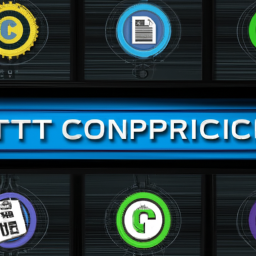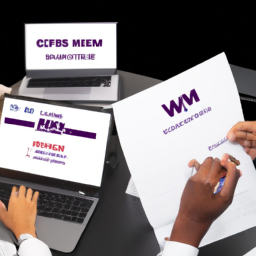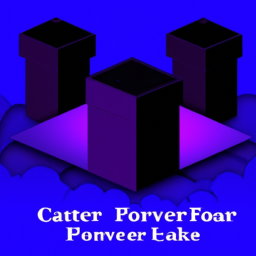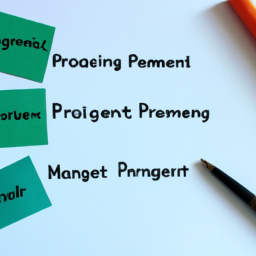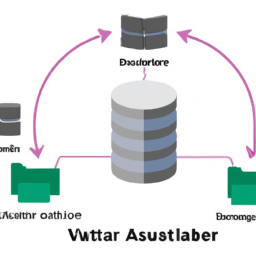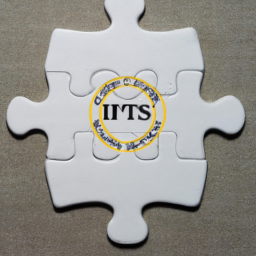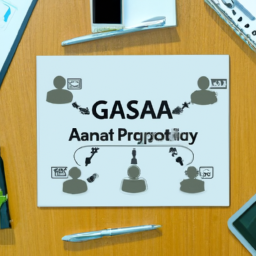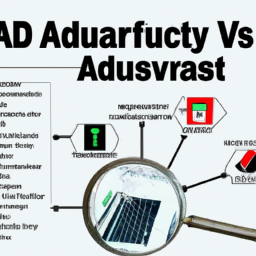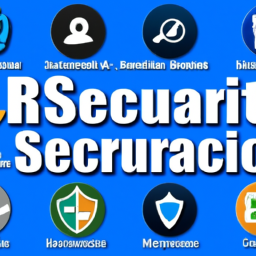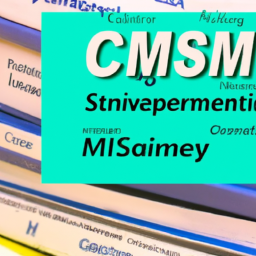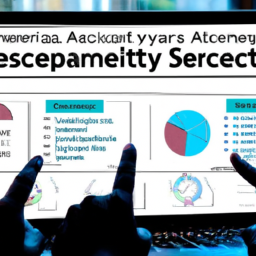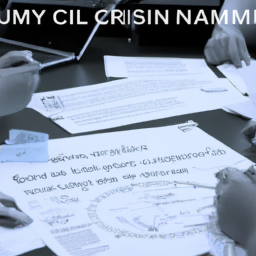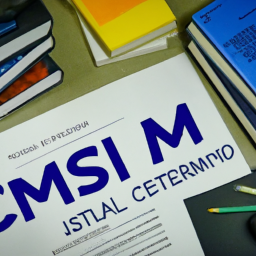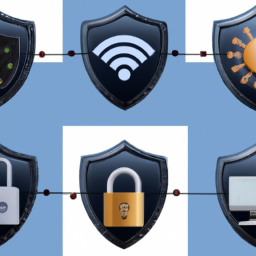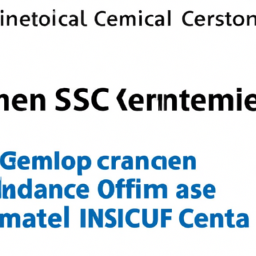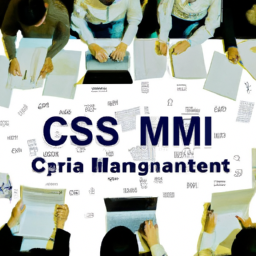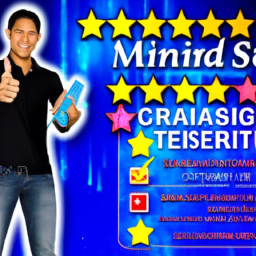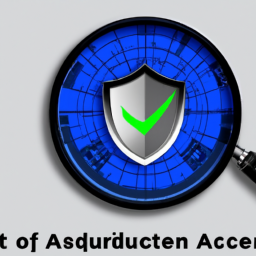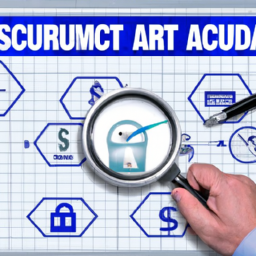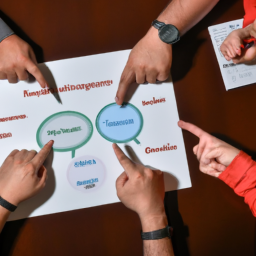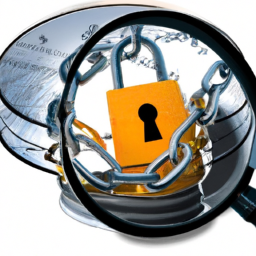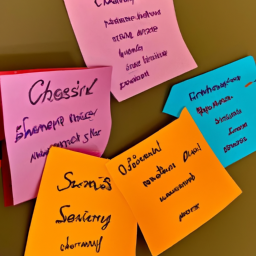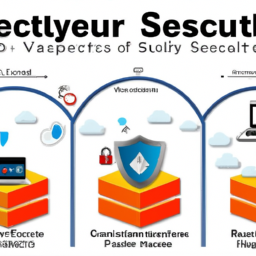Did you know that 70% of projects fail due to poor project management? That’s a staggering statistic, but it doesn’t have to be the case for your projects.
The key to successful project management lies in choosing the right methodologies that align with your project’s needs and goals. With so many options available, it can be overwhelming to determine which methodology is the right fit. That’s where this article comes in.
We will explore the most popular project management methodologies, including Waterfall, Agile, Scrum, Kanban, Lean, and PRINCE2, and help you understand their strengths, weaknesses, and suitability for different types of projects.
By the end of this article, you will have the knowledge and insights to make an informed decision that sets your project up for success. So, let’s dive in and discover the methodologies that will propel your projects to new heights!
Key Takeaways
- Choosing the right project management methodology is crucial for project success.
- Agile methodologies such as Scrum and Kanban prioritize adaptability, customer feedback, and collaboration.
- Waterfall methodology offers structured planning and documentation, but may be inflexible and time-consuming.
- Continuous improvement, flexibility, and scalability are important for adapting to changing circumstances and optimizing project management processes.
Waterfall Methodology
The Waterfall methodology may seem rigid, but it offers a structured approach that ensures careful planning and thorough documentation throughout the project lifecycle. This methodology follows a linear, sequential process where each phase must be completed before moving on to the next.
One of the benefits of the Waterfall methodology is its emphasis on documentation, which allows for easy tracking of progress and ensures that project requirements are met. However, this methodology can be inflexible when it comes to accommodating changes or customer feedback. Additionally, the Waterfall methodology relies heavily on upfront planning, which can be time-consuming and may not always account for unforeseen challenges that arise during the project.
Despite its limitations, the Waterfall methodology can be a suitable choice for projects with well-defined requirements and a stable scope. Transitioning to the subsequent section about ‘agile methodology’, it’s important to consider a more adaptive and iterative approach.
Agile Methodology
In the Agile Methodology, you’ll find an iterative and collaborative approach to project management.
This means that teams work in short cycles, or sprints, to deliver small increments of the project and continuously collaborate with stakeholders.
Emphasis is placed on customer feedback and adaptability, allowing for changes to be made throughout the project to better meet the needs of the customer.
This methodology also promotes continuous improvement and flexibility, encouraging teams to regularly reflect on their processes and make adjustments as necessary to achieve the best possible outcomes.
Iterative and collaborative approach
By embracing an iterative and collaborative approach, project management becomes a lively dance where ideas sway, evolve, and intertwine to create a harmonious final product. This methodology offers numerous benefits and implementation strategies that contribute to the success of projects.
The iterative nature allows for continuous improvement and the ability to adapt to changing requirements, ensuring that the project remains relevant and up-to-date. Collaboration among team members fosters a creative and inclusive environment, where diverse perspectives are valued and incorporated into the decision-making process.
Case studies of successful iterative and collaborative projects demonstrate how this approach can lead to increased productivity, higher quality deliverables, and greater customer satisfaction.
As we transition to the next section, it’s important to note that an emphasis on customer feedback and adaptability is another crucial aspect of project management success.
Emphasis on customer feedback and adaptability
Customer feedback and adaptability are key factors that determine the success of a project, allowing teams to continuously improve and stay relevant in a rapidly changing environment. By placing a strong emphasis on customer satisfaction, project managers can ensure that the final product meets the needs and expectations of the end-users.
This involves actively seeking feedback from customers throughout the project lifecycle and incorporating their input into the development process. Adaptive project management methodologies, such as Agile and Scrum, provide frameworks that enable teams to quickly respond to changing requirements and adjust their approach accordingly.
The ability to adapt to customer feedback and changing circumstances ensures that the project remains on track and delivers value to the stakeholders. As a result, projects are more likely to succeed and meet the ever-evolving demands of the market, fostering continuous improvement and flexibility in project management.
Continuous improvement and flexibility
With continuous improvement and flexibility, project teams can adapt to changing circumstances like a chameleon changing its colors, ensuring the project remains on track and delivers value to stakeholders. By embracing the concept of continuous improvement, teams can identify areas of improvement throughout the project lifecycle and make necessary adjustments. This allows for a proactive approach to problem-solving and prevents issues from becoming major roadblocks.
Additionally, being flexible in project management methodologies enables teams to tailor their approach to the specific needs and goals of the project. This adaptability allows for the incorporation of different strategies and techniques that maximize efficiency and effectiveness. Continuous improvement and adaptable strategies go hand in hand, providing project teams with the tools they need to succeed.
In the subsequent section about the scrum methodology, we’ll explore how this approach embodies these principles of continuous improvement and flexibility.
Scrum Methodology
In Scrum methodology, you’ll have a framework for managing complex projects. This methodology follows an iterative and incremental development approach, allowing for flexibility and adaptability throughout the project.
You’ll also have empowered cross-functional teams, where each member brings their expertise and collaborates to achieve the project goals.
Framework for managing complex projects
When managing complex projects, you have to navigate through a labyrinth of tasks, resources, and stakeholders, ensuring that everything falls into place like a well-choreographed dance. Framework selection becomes crucial in project complexity management, as it provides a structured approach to handling intricate projects. One popular framework for managing complex projects is the RACI matrix. This matrix helps in clarifying roles and responsibilities, ensuring that everyone knows who is accountable, who should be consulted, who needs to be informed, and who is responsible for each task. By using a RACI matrix, you can effectively manage project complexity by assigning clear ownership and ensuring effective communication. This sets the stage for the subsequent section on iterative and incremental development, where you can further enhance project success through continuous improvement and adaptation.
Iterative and incremental development
To effectively manage complex projects, you should embrace iterative and incremental development, allowing for continuous improvement and adaptation.
Iterative and incremental development is a project management approach where the project is divided into smaller, manageable iterations or increments. Each iteration involves completing a subset of project requirements and delivering a working product. This allows for frequent feedback and collaboration with stakeholders, ensuring that the project stays on track and meets their expectations.
One of the key benefits of iterative and incremental development is the ability to quickly respond to changes and incorporate feedback throughout the project lifecycle. By breaking down the project into smaller iterations, teams can identify and address potential issues early on, minimizing risks and increasing the chances of project success.
However, implementing this approach can also present challenges, such as managing scope creep and ensuring effective communication among team members.
Iterative and incremental development is applicable in various industries, including software development, manufacturing, and construction. Regardless of the industry, this approach promotes flexibility, adaptability, and continuous improvement.
By transitioning into the subsequent section about empowered cross-functional teams, you can further enhance the success of your project.
Empowered cross-functional teams
Empowered cross-functional teams are like the fuel that propels a project forward, igniting creativity, collaboration, and innovation. When individuals from different departments come together, their diverse skills and perspectives enhance problem-solving and decision-making. Cross-functional collaboration ensures that all aspects of a project are considered, leading to a more holistic and comprehensive approach.
By empowering team members to make decisions and take ownership of their work, a sense of ownership and accountability is fostered, resulting in increased productivity and job satisfaction. This collaborative environment also encourages open communication and knowledge sharing, leading to continuous improvement and learning.
Empowered cross-functional teams are vital for project success, as they enable adaptability, agility, and the ability to respond quickly to changes. With this foundation in place, let’s now explore the kanban methodology.
Kanban Methodology
In Kanban methodology, visual workflow management is a key element that allows you to track the progress of tasks and identify any bottlenecks or delays. By visualizing the workflow, you can easily understand the status of each task and make informed decisions to optimize efficiency and ensure continuous delivery.
Additionally, Kanban promotes limiting work in progress, which helps prioritize tasks and prevents overloading team members, ultimately leading to better focus and improved productivity.
Visual workflow management
Utilizing visual workflow management techniques can greatly enhance the efficiency and effectiveness of project management methodologies. By incorporating visual elements into your project management approach, you can easily identify bottlenecks, streamline processes, and ensure smooth workflow throughout the entire project lifecycle.
Here are three ways visual workflow management can benefit your project:
-
Visual workflow analysis: With visual tools like Kanban boards or Gantt charts, you can easily analyze the flow of work, identify any delays or inefficiencies, and make necessary adjustments to keep the project on track.
-
Value stream mapping: Visualizing the entire value stream allows you to identify areas of waste and optimize the flow of value to the customer. It helps you eliminate unnecessary steps, reduce lead times, and improve overall project delivery.
-
Increased collaboration: Visual workflows provide a shared understanding of project status, priorities, and dependencies, fostering collaboration among team members and stakeholders.
By incorporating visual workflow management techniques, you can lay a solid foundation for the subsequent section on ‘focus on continuous delivery and efficiency’.
Focus on continuous delivery and efficiency
Streamline your project’s progress by focusing on continuous delivery and efficiency. This involves adopting continuous improvement techniques and streamlining project processes.
Continuous improvement techniques involve regularly assessing and refining your project management methodologies to identify areas for improvement. This could include implementing feedback loops, conducting retrospective meetings, and encouraging a culture of learning and growth.
Streamlining project processes involves eliminating unnecessary steps, automating repetitive tasks, and optimizing resource allocation. By prioritizing continuous delivery and efficiency, you can minimize bottlenecks, reduce waste, and increase productivity.
This will create a smooth project flow, allowing you to effectively manage work in progress and transition seamlessly into the subsequent section on limiting work in progress.
Limiting work in progress
To effectively manage project flow, it’s crucial to limit the amount of work in progress.
Studies have shown that teams that focus on completing tasks one at a time are 60% more likely to meet their deadlines.
By limiting work in progress, you can improve efficiency and reduce bottlenecks in your project management process.
When team members have too much on their plate, they may become overwhelmed and struggle to prioritize tasks effectively. This can lead to delays and decreased productivity.
However, by implementing strategies to limit the amount of work in progress, you can ensure that team members can fully focus on completing one task before moving on to the next.
This approach helps to streamline the project flow and improve overall efficiency.
In the subsequent section about lean methodology, we will explore further techniques to optimize project management processes.
Lean Methodology
When implementing the Lean Methodology, you’ll quickly see how it can transform your project management approach into a streamlined and efficient process. This methodology, which originated in the manufacturing industry, focuses on eliminating waste and maximizing value.
Here are four key aspects of the Lean Methodology that can greatly benefit your project:
-
Visual Workflow Management: Lean emphasizes the use of visual tools, such as Kanban boards, to provide a clear and transparent view of the project’s progress. This visual representation helps teams identify bottlenecks, prioritize tasks, and ensure smooth workflow.
-
Continuous Improvement: Lean encourages a culture of constant learning and improvement. By regularly evaluating and optimizing processes, you can eliminate inefficiencies and deliver better results.
-
Customer-Centric Approach: Lean puts a strong emphasis on understanding and meeting customer needs. This helps ensure that your project delivers value and aligns with the expectations of your stakeholders.
-
Cross-Functional Collaboration: Lean promotes collaboration and communication among team members from different disciplines. This fosters a holistic approach that allows for better problem-solving and decision-making.
By understanding the principles and practices of the Lean Methodology, you’ll be well-equipped to enhance your project management approach. Now, let’s explore the Prince2 methodology and how it can further optimize your project management process.
PRINCE2 Methodology
In the discussion on the PRINCE2 Methodology, you’ll explore the key points of structured and controlled project management. The emphasis is on clear roles and responsibilities. The methodology also highlights its flexibility and scalability for different project sizes and complexities.
With PRINCE2, you can expect a well-organized and controlled approach to project management. This ensures that all aspects are thoroughly planned and executed. The methodology places great importance on clearly defining roles and responsibilities. This provides a framework for effective collaboration and accountability.
Additionally, PRINCE2 is flexible and scalable. It allows you to tailor it to the specific needs and complexities of different projects. This makes it a valuable tool for project success.
Structured and controlled project management
Ironically, structured and controlled project management methodologies may seem like a surefire way to success, but they can also stifle creativity and hinder adaptability.
While these methodologies provide a clear framework and process for project execution, they often prioritize adherence to predefined plans and procedures over flexibility and innovation.
However, it’s important to note that structured project management can still be effective when combined with the right level of flexibility. By incorporating agile elements and allowing for iterative development, organizations can strike a balance between structure and adaptability. This approach enables teams to respond to changing requirements and deliver value incrementally.
Additionally, structured project management can promote accountability and ensure that tasks are completed on time and within budget. By clearly defining roles and responsibilities, team members understand their contributions, fostering collaboration and reducing confusion.
This emphasis on clear roles and responsibilities sets the stage for the subsequent section about ’emphasis on clear roles and responsibilities’ without explicitly stating it.
Emphasis on clear roles and responsibilities
To fully embrace the potential of clear roles and responsibilities, you’ll discover a newfound sense of collaboration and efficiency within your team. Clear communication is key in ensuring that everyone understands their tasks and expectations. By clearly defining roles, team members can take ownership of their responsibilities and be held accountable for their actions. This not only fosters a sense of trust and reliability within the team, but also allows for smoother project execution.
Incorporating a 2 column and 5 row table can further enhance the clarity of roles and responsibilities. It provides a visual representation of who is responsible for what and allows for easy reference. This promotes a sense of structure and organization, making it easier for team members to navigate through the project.
Emphasizing clear roles and responsibilities sets the foundation for a successful project management approach. It creates a framework where each team member understands their part in the project and can contribute effectively. With this foundation in place, you can now explore how to be flexible and scalable for different project sizes and complexities.
Flexible and scalable for different project sizes and complexities
Adapting to varying project sizes and complexities requires a flexible and scalable approach that can cater to different team dynamics and resource needs.
Flexible project management methodologies allow teams to adjust their processes and workflows to fit the unique requirements of each project. This adaptability ensures that the project management approach remains effective regardless of the scale or complexity of the project at hand.
By incorporating a scalable project complexity framework, project managers can easily assess and prioritize tasks based on the project’s level of intricacy. This helps allocate resources efficiently and ensures that the team is equipped with the necessary skills and tools to handle the project’s challenges.
Additionally, a flexible and scalable approach allows for seamless collaboration between team members, regardless of their size or geographical location.
Overall, embracing flexibility and scalability in project management methodologies enhances the chances of success for projects of all sizes and complexities.
Frequently Asked Questions
What are the main advantages and disadvantages of using the Waterfall methodology?
Advantages of using the waterfall methodology include its straightforward and linear approach, enabling clear planning and easy tracking of progress.
However, be cautious of its rigidity, as it lacks flexibility to accommodate changes or unexpected obstacles.
This method requires a thorough understanding of the project from the start, as revisions can be costly and time-consuming.
It’s essential to weigh the benefits of structure against the potential limitations when considering the waterfall methodology for your project.
How does the Agile methodology differ from the Scrum methodology?
Agile and Scrum are both popular project management methodologies, but they have distinct differences.
Agile is a flexible and iterative approach that focuses on delivering value to customers through continuous collaboration and adaptation.
On the other hand, Scrum is a specific framework within the Agile methodology that follows a set of roles, events, and artifacts.
Agile emphasizes adaptability and customer involvement, while Scrum provides a structured framework for managing projects.
In comparison, the Waterfall methodology is a linear approach that lacks the flexibility and customer involvement of Agile and Scrum.
What are the key principles and practices of the Kanban methodology?
Implementing Kanban is like opening a door to a world of efficiency and productivity.
The key principles of Kanban revolve around visualizing work on a Kanban board, limiting work in progress, and continuously improving processes.
By visualizing tasks, teams gain transparency and can easily identify bottlenecks.
Limiting work in progress helps maintain focus and prevent overload.
Regularly analyzing and refining processes ensures constant growth and optimization.
Kanban is a proven methodology that maximizes workflow and delivers exceptional results.
How does the Lean methodology prioritize efficiency and waste reduction in project management?
The Lean methodology prioritizes efficiency and waste reduction in project management. By focusing on the elimination of non-value adding activities, Lean aims to streamline processes and maximize productivity.
This is achieved through various practices such as continuous improvement, value stream mapping, and just-in-time delivery. By reducing waste, Lean helps teams optimize their resources, minimize costs, and improve overall project performance.
Implementing Lean principles can lead to increased efficiency, higher customer satisfaction, and ultimately, project success.
What are the key stages and processes involved in the PRINCE2 methodology for project management?
The key stages and processes involved in the Prince2 methodology for project management are essential for ensuring successful project outcomes.
The methodology consists of seven key stages: starting a project, initiating a project, directing a project, controlling a project, managing product delivery, managing stage boundaries, and closing a project.
These stages are supported by various processes such as risk management, change control, quality management, and communication management.
By following these stages and processes, the Prince2 methodology provides a structured and effective approach to project management.
Conclusion
After exploring the various project management methodologies, it’s clear that choosing the right one is crucial for success.
The Waterfall methodology, with its sequential approach, may be suitable for projects with well-defined requirements.
On the other hand, the Agile methodology, with its iterative and collaborative nature, is ideal for projects that require adaptability and frequent feedback.
Scrum methodology offers a framework for managing complex projects, while Kanban methodology focuses on visualizing workflow.
Lean methodology emphasizes efficiency and waste reduction, and PRINCE2 methodology provides a structured approach for project management.
By understanding the strengths and weaknesses of each methodology, you can select the one that aligns best with your project’s goals and constraints, ensuring a successful outcome.







